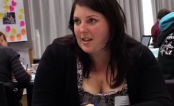Te Aho Arataki Marau mō te Ako i Te Reo Māori - Kura Auraki
Curriculum Guidelines for Teaching and Learning Te Reo Māori in English-medium Schools: Years 1-13
Curriculum guidelines 521 PDF (PDF, 4 MB)
Page navigation:
Te whai wāhi mai a te whānau me te hapori
Whānau and community engagement
Success in learning depends on teachers and schools building productive relationships with the students’ whānau and communities as well as with the students themselves. As in the classroom, these relationships are most effective when they are based on mutual respect and the concept of ako, where people value and build on each other’s knowledge and expertise. The partners in this relationship work together towards shared goals for the students’ learning.
Students, whānau, and teachers are all likely to engage when schools foster their autonomy and self-reliance and build on their existing strong aspirations and motivation.
It is important that schools develop their te reo Māori programmes in consultation with Māori whānau and communities. When Māori students see that their whānau, hapū and iwi are actively engaging with their school and that their input is reflected in the teaching content and the learning environment, the students gain increased confidence to live and participate as Māori in the school setting. For all students of te reo Māori, it is very useful to engage in interactions with first-language speakers and to have opportunities to take part in real Māori cultural events in the community.
Consultation should be regular, ongoing, and genuine. This can enable schools to ensure that the content of their te reo Māori teaching and learning programme is relevant and appropriate, acknowledging that te reo Māori is a taonga for Māori under the Treaty of Waitangi. Whānau can also be involved more directly in the teaching and learning programme. For example, a member of a student’s whānau might contribute to a lesson based on achievement objective 3.1 ('communicate, including comparing and contrasting, about habits, routines and customs') by showing students how to carry out a routine task at the marae, such as preparing the wharenui (meeting house) for manuhiri (visitors) or ordering the food for a hui.
Teachers can also engage with whānau and communities by seeking help to improve their own proficiency in te reo Māori and by learning to use the reo of the local iwi. Where appropriate, teachers can become involved in Māori activities in the local community. There may be existing networks that teachers can engage with to inform their programmes, to build stronger home–school relationships and to help them keep up to date with local and national issues affecting Māori.



